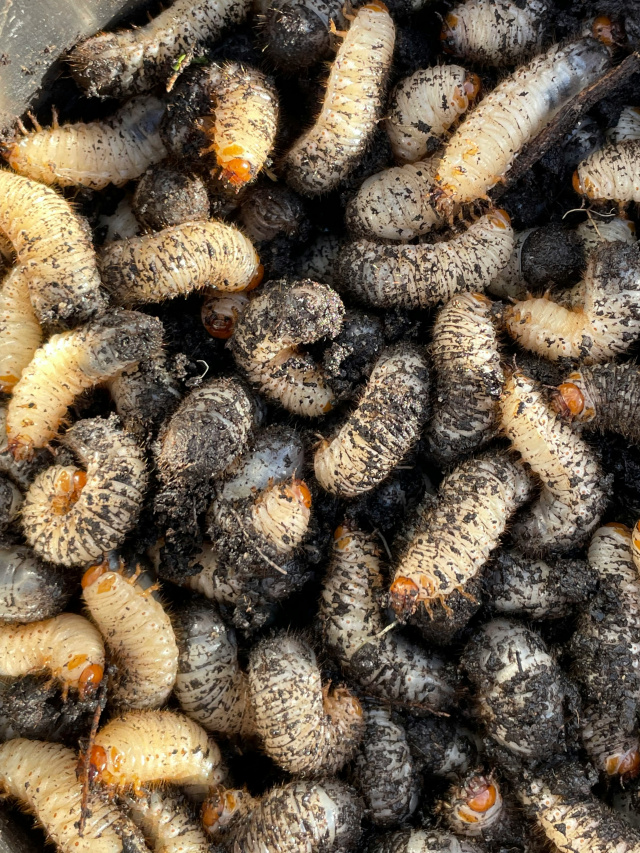Saving Forty Spotted Pardalote chicks from blood-sucking maggots!
Bruny Island
Now this is a native fly and it is endemic (restricted) to Tasmania. It has co-occurred with Forty Spotted Pardalotes for aeons.
So there has to have been some sort of balance between these two for them to co-exist, but at the moment that balance is completely out. On North Bruny we're looking at more than 90% mortality of nestlings because of fly parasites.
What has been found is that the rates of fly infection are greater if the winter has been warmer. What we think is happening is that if we get cold weather over the winter, it kills the flies. But as our winters are getting warmer, more flies are surviving and so it's tipped the balance in favour of the flies, and now we've got a major problem for the Forty Spotted Pardalote population.

What has been done at an experimental level is to take some chicken feathers, soak them in insecticide, and put them in a dispenser, hang it up in the tree, and then the Forty-Spotted Pardalotes come and collect the feathers and take them and put them in their nest and fumigate their own nest.
And the difference is enormous. They're going from more than 90% mortality of nestlings to less than 10% mortality of nestlings, and going from 0.3 fledglings per nest to 3.8 fledglings per nest. So we're looking at rolling this out at an operational level as a way of increasing reproductive output for Forty-Spotted Pardalotes.

And the difference is enormous. They're going from more than 90% mortality of nestlings to less than 10% mortality of nestlings
Now this is a native fly and it is endemic (restricted) to Tasmania. It has co-occurred with Forty Spotted Pardalotes for aeons.
So there has to have been some sort of balance between these two for them to co-exist, but at the moment that balance is completely out. On North Bruny we're looking at more than 90% mortality of nestlings because of fly parasites.
What has been found is that the rates of fly infection are greater if the winter has been warmer. What we think is happening is that if we get cold weather over the winter, it kills the flies. But as our winters are getting warmer, more flies are surviving and so it's tipped the balance in favour of the flies, and now we've got a major problem for the Forty Spotted Pardalote population.

What has been done at an experimental level is to take some chicken feathers, soak them in insecticide, and put them in a dispenser, hang it up in the tree, and then the Forty-Spotted Pardalotes come and collect the feathers and take them and put them in their nest and fumigate their own nest.
And the difference is enormous. They're going from more than 90% mortality of nestlings to less than 10% mortality of nestlings, and going from 0.3 fledglings per nest to 3.8 fledglings per nest. So we're looking at rolling this out at an operational level as a way of increasing reproductive output for Forty-Spotted Pardalotes.

And the difference is enormous. They're going from more than 90% mortality of nestlings to less than 10% mortality of nestlings
You might like...

A hopeful road-map for saving the Forty Spotted Pardalote

Helping Forty Spotted Pardalotes nest

Ecology of the Forty-Spotted Pardalote

Improving reproductive success of forty spotted pardalotes
Newsletter
Sign up to keep in touch with articles, updates, events or news from Kuno, your platform for nature

